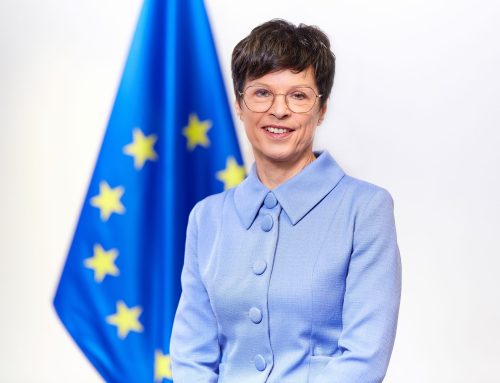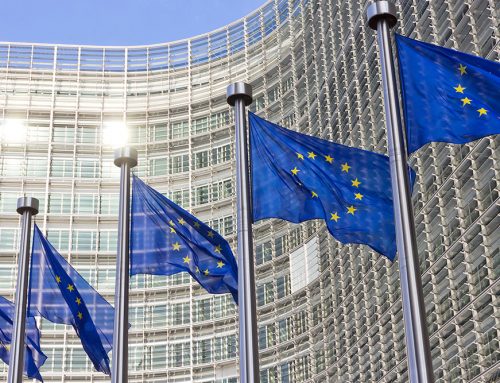In the first nine months of 2013, compared with the first nine months of 2012, EU28 exports to Russia fell slightly from 91 bn euro to 90 bn, and imports decreased from 159 bn to 156 bn
From 2002 to 2012, EU28 international trade in goods with Russia was characterised by a strong increase and a continuous deficit. Both exports and imports rose continuously up to 2008, fell significantly in 2009, then recovered to reach new annual peaks in 2012. EU28 exports to Russia rose from 34.5 billion euro in 2002 to 123.4 bn in 2012, and imports grew from 65.2 bn in 2002 to 215.0 bn in 2012. As a result, the EU28 trade deficit with Russia increased from 30.7 bn in 2002 to 91.6 bn in 2012.
In the first nine months of 2013, compared with the first nine months of 2012, EU28 exports to Russia fell slightly from 91 bn euro to 90 bn, and imports decreased from 159 bn to 156 bn. As a result, the trade deficit also fell slightly from 68 bn in the first nine months of 2012 to 66 bn in the first nine months of 2013.
Accounting for around 7% of total EU28 exports of goods and 12% of total EU28 imports, Russia is the EU28‘s third most important trading partner after the USA and China.
On the occasion of the 32nd European Union – Russia summit, which will take place on 28 January 2014 in Brussels, Eurostat, the statistical office of the European Union, issues the latest data on trade and investments between Russia and the EU.
Germany accounts for almost a third of EU28 exports to Russia and nearly a fifth of EU28 imports from Russia
Among the EU28 Member States, Germany (27.4 bn euro or 30% of EU exports) was by far the largest exporter to Russia in the first nine months of 2013, followed by Italy (8.0 bn or 9%), the Netherlands and Poland (both 6.1 bn or 7%) and France (6.0 bn or 7%). Germany (28.8 bn or 19% of EU imports) was also the largest importer, followed by the Netherlands1 (22.4 bn or 14%), Italy (14.9 bn or 10%) and Poland (13.9 bn or 9%).
Twenty Member States recorded deficits in trade with Russia in the first nine months of 2013, the largest being observed in the Netherlands1 (-16.3 bn euro), Poland (-7.8 bn), Italy (-6.8 bn) and Greece (-4.8 bn). Surpluses were modest, the highest being recorded in Austria (+1.2 bn).
Just over 85% of EU28 exports to Russia in the first nine months of 2013 were manufactured goods, while energy accounted for nearly 80% of imports.
EU28 international trade in goods with Russia and the world
billion euro
EU28 surplus of 14 bn in trade in services with Russia in 2012
EU28 trade in services with Russia increased between 2011 and 2012, although more significantly for exports. In 2012, the EU28 exported 29.3 bn euro of services to Russia, while imports amounted to 15.2 bn, meaning that the EU28 had a surplus of 14.2 bn in trade in services with Russia, compared with +9.8 bn in 2010 and +10.0 bn in 2011. The surplus in 2012 was mainly due to surpluses for travel (+7.9 bn), computer & information services and “other business services”, which includes miscellaneous business, professional & technical services (both +2.0 bn), royalties & licence fees and financial services (both +1.0 bn), slightly offset by a deficit in transportation (-0.6 bn). Russia accounted for 4.4% of total extra-EU28 exports and 3.0% of total imports of services.
Large fluctuations in EU28 FDI flows with Russia
EU28 Foreign Direct Investment (FDI) into Russia increased from 8.8 bn euro in 2009 to 27.8 bn in 2010, fell to 8.7 bn in 2011, and then increased again to 17.9 bn in 2012, while Russian direct investment into the EU28 decreased from 12.5 bn in 2009 to 7.6 bn in 2010, fell further to 3.1 bn in 2011 and then increased again to 8.4 bn in 2012.
EU28 FDI flows with Russia
(million euro)
| 2009 | 2010 | 2011 | 2012 | |
| EU28 FDI flows to Russia | 8 828 | 27 828 | 8 655 | 17 857 |
| Russian FDI flows to the EU28 | 12 497 | 7 630 | 3 138 | 8 448 |
Published by: Eurostat Press Office
Eurostat News Releases on the internet:



